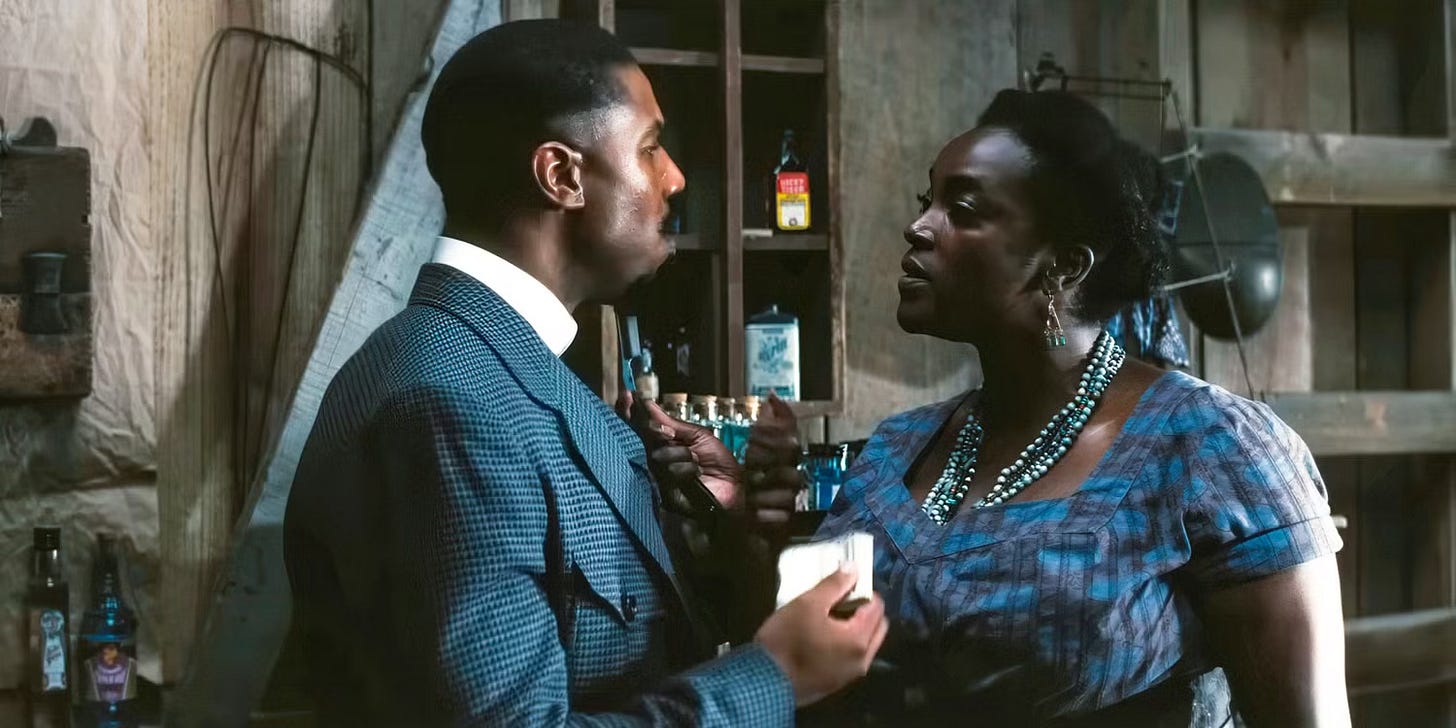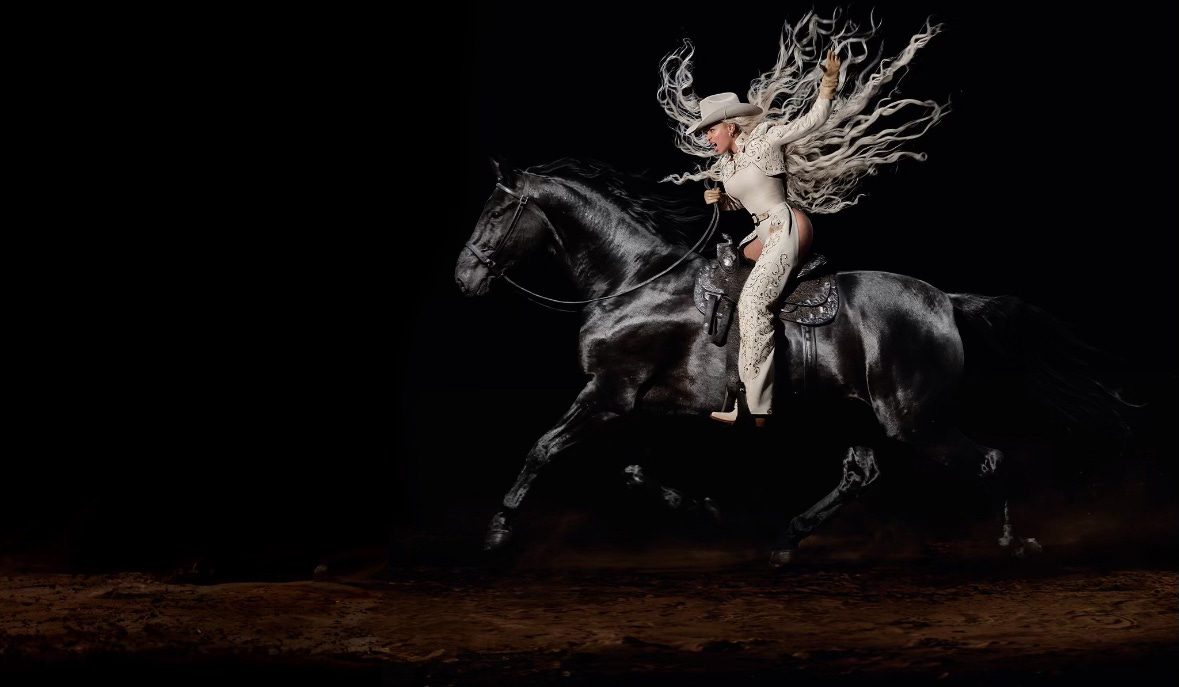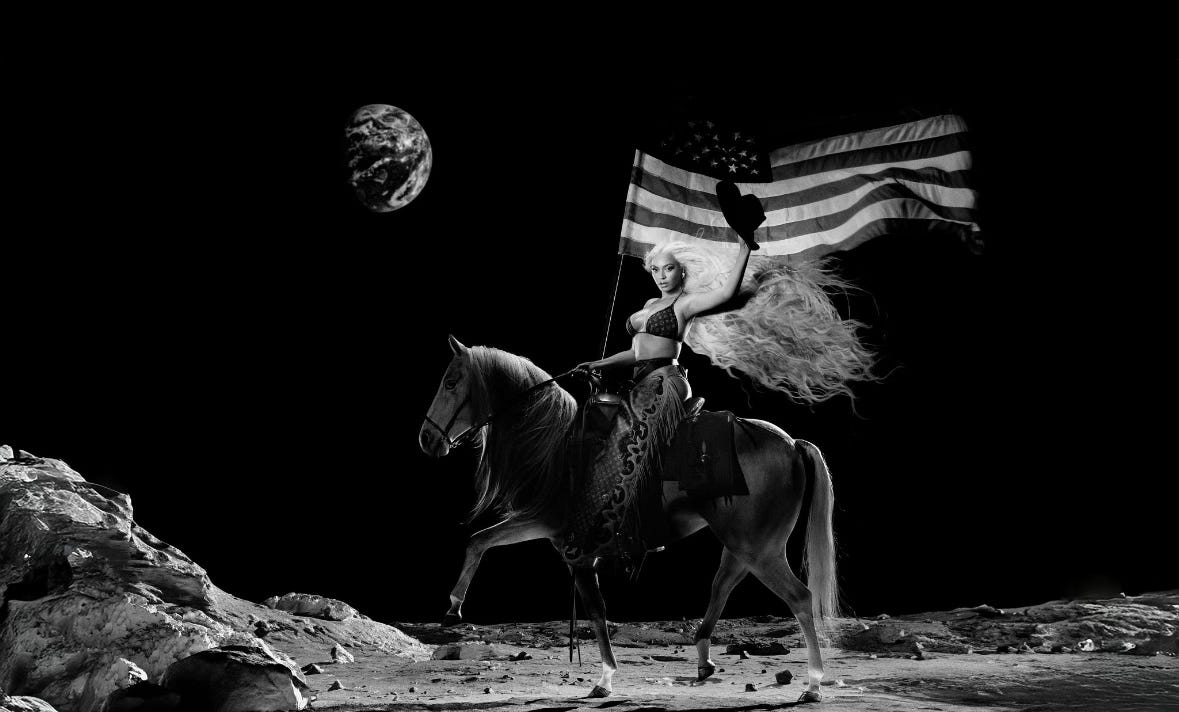Cowboy Carter by Beyoncé and Sinners by Ryan Coogler: A Powerful Duality of Southern Gothic and Black American Pride
In the ever-evolving landscape of entertainment, two groundbreaking works have recently captured the imagination of audiences: Beyoncé’s Cowboy Carter and Ryan Coogler’s Sinners. While these two projects may seem worlds apart at first glance—one a musical anthem and the other a deeply cinematic exploration of Southern Gothic themes—their simultaneous existence serves as a profound cultural statement. They both delve deeply into Southern Black identity, reclaiming the complexities of the South through a blend of celebration, resistance, and introspection.
At their core, both Cowboy Carter and Sinners engage with the Southern Gothic tradition, a genre that explores the eerie, grotesque, and deeply emotional undercurrents of the American South. These works powerfully intersect, presenting two distinct yet complementary portraits of Black life in the South—one steeped in pride and strength, the other in sin, redemption, and struggle. Together, they offer a dynamic commentary on Southern Black pride, resilience, and the complexity of identity in a region long defined by its contradictions.
Cowboy Carter: Beyoncé’s Celebration of Southern Black Power
Beyoncé’s Cowboy Carter serves as both a love letter to the American South and a bold statement about Black Southern pride. Drawing on her roots in Texas, the song embraces Southern imagery and narratives, blending elements of country music, hip-hop, and gospel to create a unique soundscape that reflects the hybrid cultural experience of being Black in the South. The track is steeped in Southern Gothic overtones, which often explore themes of decay, moral complexity, and familial legacies, but Cowboy Carter transforms those traditional motifs into an anthem of strength and pride.
Southern Gothic literature typically presents a world of crumbling aristocracy, haunted by the weight of history and the ghosts of its past. However, in Cowboy Carter, Beyoncé flips that narrative. The song American Requiem celebrates resilience, a refusal to be confined by history’s constraints, and a reclamation of identity. Through vivid imagery of cowboys and rugged landscapes, Beyoncé invokes the figure of the "cowboy" as a symbol of both toughness and freedom, but one that is firmly rooted in the realities of Black survival. This blend of power and history echoes Southern Gothic themes, but it does so through a lens of empowerment and pride.
In her lyrics, Beyoncé draws on the deeply layered narratives of the Black Southern experience: the beauty of the land, the trauma of the past, and the strength of the community. The track embodies a defiant stance, asserting that Black Southern identity is not something to be pitied or ignored but something to be celebrated and uplifted. Cowboy Carter is about owning one’s heritage—acknowledging the complexities of the past while asserting the right to define the future.
Sinners: Ryan Coogler’s Deep Dive into Southern Gothic and Redemption
In contrast to Beyoncé’s celebration of Southern pride, Ryan Coogler’s Sinners explores the darker, more introspective side of the Southern Gothic tradition. Set in the American South, the film grapples with themes of sin, morality, and redemption, focusing on the emotional and psychological complexities of its characters. Coogler, known for his nuanced storytelling and ability to tackle deeply sensitive social issues, uses the Southern Gothic genre to explore the intersection of religion, race, and personal identity in the Black South.
Much like Southern Gothic literature, Sinners delves into the grotesque and the tragic, probing the tensions between individual desires and the rigid moral frameworks that often govern Southern life. The film likely explores the darker aspects of Southern identity, particularly the way religion has historically been used to both oppress and redeem. In this context, Sinners is less about celebration and more about introspection—confronting personal and societal demons, reckoning with the weight of past sins, and striving toward redemption.
While Beyoncé’s Cowboy Carter empowers its listeners by celebrating survival and strength, Sinners takes a more somber approach, grappling with the costs of survival in a world that demands conformity. The characters in Sinners areshaped by a society that seeks to box them in, be it through religion, race, or societal norms. As such, the film may focus on the painful but necessary journey of breaking free from these constraints to reclaim one’s humanity and identity.
The Power of Their Simultaneous Existence
The coexistence of Cowboy Carter and Sinners is not just a coincidence; it is a powerful cultural statement. These two works highlight the multifaceted nature of Black Southern identity, celebrating both its strength and its vulnerability, its pride and its pain. Together, they paint a fuller picture of the Southern Black experience—one that encompasses both joyous defiance and anguished introspection.
At their heart, both Beyoncé and Coogler address the ways in which the South shapes the identities of its inhabitants, particularly Black Southerners. The South has long been a place where history—especially the history of slavery, racism, and segregation—casts a long shadow. But it is also a place of incredible resilience, creativity, and power. Cowboy Carter and Sinners present two sides of this complex dynamic: one embraces the heritage and the legacy of survival, while the other challenges the moral and cultural structures that attempt to define and confine Black people.
By releasing at the same time, these two works create a dialogue between celebration and reckoning. Beyoncé’s song is a triumphant anthem of Black Southern strength, while Coogler’s film forces viewers to confront the complexities of that strength—how it is often forged in the crucible of pain, sin, and redemption. Together, they offer a richer, more nuanced understanding of what it means to be Black in the South.
Shared Musicality: The Sonic Connection Between Sinners and Cowboy Carter
While Cowboy Carter and Sinners may differ in medium—one a song, the other a film—their shared musicality offers a surprising bridge between the two. Both works incorporate elements of Southern music that draw from Black cultural traditions, blending genres like gospel, blues, country, and hip-hop to create a soundscape that is deeply rooted in Southern heritage. Cowboy Carter, with its fusion of country rhythms, gospel-like choir harmonies, and hip-hop beats, echoes the musical richness of the South, celebrating its diversity and complexity.
Similarly, Sinners taps into this same sonic territory, using music to underscore its emotional depth. Coogler’s film likely weaves a soundtrack that features gospel, blues, and soul to reflect the spiritual and psychological landscapes of its characters. This shared musicality creates a harmonious connection between the two works, as both celebrate the power of Southern Black music to transcend hardship and speak to the heart of the human experience. In both cases, music acts as a tool of storytelling, infusing the narrative with a sense of place, history, and identity—making the emotional journey of each project all the more resonant.
Southern Gothic: A Shared Framework for Exploration
Both Cowboy Carter and Sinners draw heavily from Southern Gothic traditions, yet they use the genre in distinct ways. Southern Gothic is marked by its focus on the decaying or haunted South, where family histories are laced with secrets, and where the past refuses to stay buried. In the case of Cowboy Carter, this decay is turned into a powerful narrative of resistance and pride—where ghosts of the past are confronted and harnessed to create something beautiful and empowering. In contrast, Sinners embraces the haunting nature of the South more literally, focusing on the moral and spiritual decay that often arises in such a charged environment, while also suggesting the potential for spiritual and personal renewal.
The Southern Gothic framework in both projects highlights the tension between the old and new—between the inherited pain of the past and the possibility of personal and collective transformation. For Beyoncé, the South’s past is something to be transcended and reclaimed, while for Coogler, it is something that must be understood, confronted, and ultimately redeemed.
Conclusion: A Dual Force of Southern Black Pride
The existence of Cowboy Carter and Sinners at the same time is a powerful moment in cultural history. These works, though different in tone and approach, speak to the complexity of Black Southern identity, one that is shaped by both triumph and tragedy. Beyoncé’s anthem of Southern pride and resilience complements Coogler’s introspective exploration of sin and redemption, creating a conversation between celebration and confrontation.
In their own ways, both works elevate the Southern Black experience—Cowboy Carter by celebrating its power and defiance, and Sinners by exploring the deep, often painful journey toward understanding and redemption. Together, they remind us that Southern Black identity is not monolithic but multifaceted, filled with beauty, struggle, and the constant negotiation between past and present. Their simultaneous existence is a testament to the richness, depth, and resilience of the Black Southern experience.










